A new campus for climate solutions is being built on Governors Island, a small island off the coast of New York, designed by architecture studio SOM – Skidmore, Owings & Merrill.
New York’s Governors Island, located off Lower Manhattan, smells of freshly cut grass and flowers. There you’ll find hammocks, vegetable gardens, vegan food trucks, and even the city’s longest slide. Cars are not allowed here. The island is not currently inhabited, and all the people you see there are day visitors. It’s a place to have fun and escape the hustle and bustle of the big city. But it wasn’t always that way, and it won’t stay that way. After the island itself only reopened to the public in 2003, a campus for climate solutions will be built here in 2025.
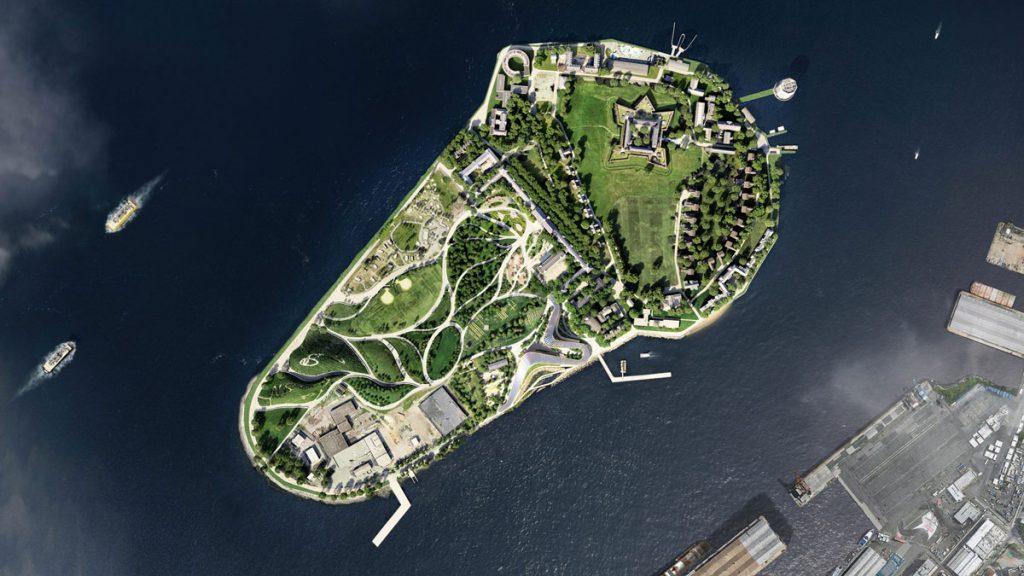
Small island, big history
The name of the island dates back to 1698. At that time, New York was still an English colony and the Colonial Assembly had reserved the island for the exclusive use of the Royal British Governor of New York. Then the Americans took over and used Governors Island for military purposes until the mid-1960s, when the U.S. Coast Guard finally established itself on the island. And even the Cold War found the beginning of its end here: In 1988, Governors Island hosted a peace talk between Ronald Reagan and Mikhail Gorbachev. Since 2003, the island has served as a recreational paradise and a bulwark against storm surges. Before that, it was given to the city of New York for a symbolic price of one dollar.
Now the island will make history once again, as a new center for climate solutions will be built there. It bears the name New York City Climate Exchange, or The Exchange for short. It was designed by the architecture studio SOM. The campus will include housing for students and faculty, as well as hotel rooms. According to the city, more than 2,200 jobs will be created there, and 600 college students, 6,000 trainees and 250 faculty members will come and go annually. The project will also expand ferry service so that a ferry will depart every 15 minutes, instead of the current 30-minute frequency.
The design for this new campus embodies the stewardship required to address the climate crisis, as curved solid wood pavilions lead through the park’s rolling landscape and recycle Governors Island’s historic fabric.
Colin Koop, Designpartner bei SOM
Zero emissions
The campus, designed by SOM, consists of several pavilions built of solid wood. “The design for this new campus embodies the stewardship required to address the climate crisis, with curved solid wood pavilions running through the park’s rolling landscape and recycling the historic fabric of Governors Island,” says Colin Koop, design partner at SOM. What makes the campus special is that it is intended to be completely emissions-free. In fact, the project will be one of the first in the U.S. to receive certification as a True Zero Waste Green Building. For example, non-potable water needs will be met by rainwater and wastewater. The campus will also generate its own electricity with solar panels, making it self-sufficient; the surplus will then be fed into the city’s power grid.
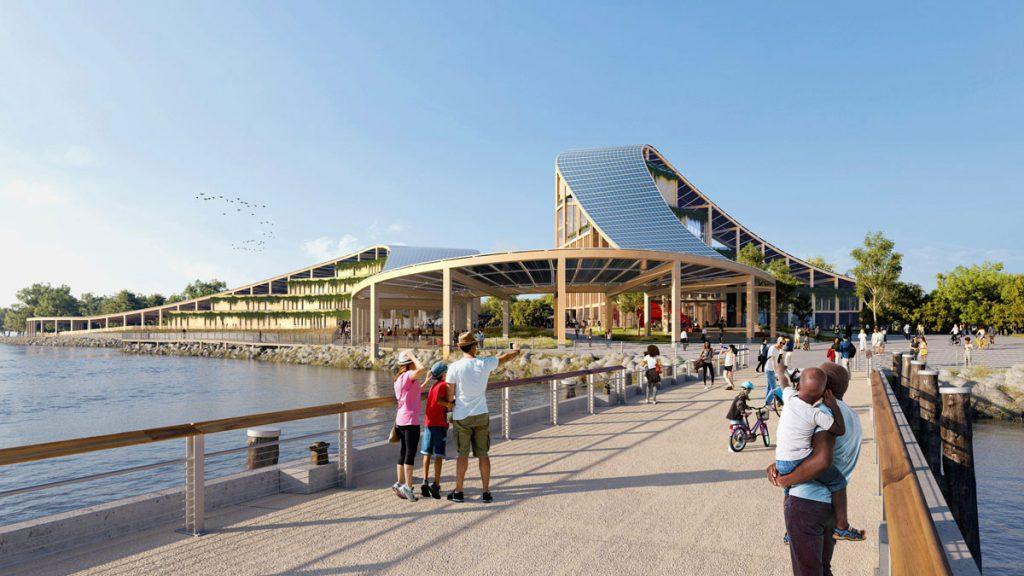
Plenty of space for thinking
SOM planned the campus as a shiny, green building with an up-and-down shape reminiscent of the hills of Governors Island. It will range from eight stories at its tallest to four stories at its lowest. The facade will consist of glass fronts framed by wooden beams. The solid wood structures are intended to create a captivating new public space for all New Yorkers, according to the architecture firm. An auditorium will serve as a venue for meetings and lectures by climate experts. SOM’s design also includes space for green workplace, training and skills development programs to be delivered in partnership with local educational institutions and businesses. Construction is scheduled to begin in 2025, with an expected opening in 2028.
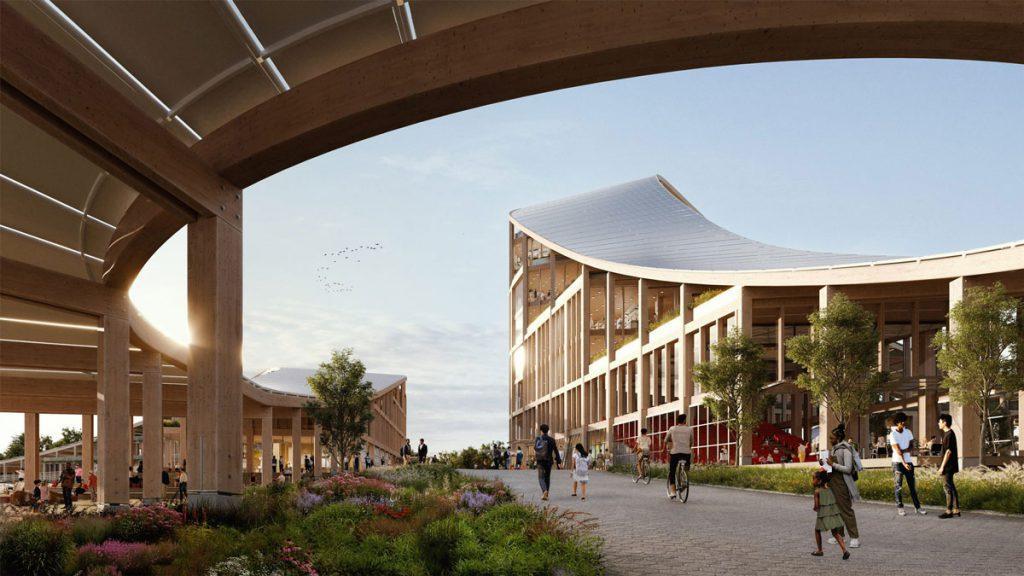
All different
The idea of a climate center on Governors Island has been circulating for years. But not everyone agrees with the project. In December 2021, a judge dismissed the lawsuit, saying the new buildings would destroy the island’s tranquility.
When the federal government handed over control to the City of New York in 2003, it imposed a condition that the island not be used for commercial housing projects. So, because of the new climate center, the island had to be rezoned by the City Council. The project is financed by city capital funds, the imons Foundation founded by billionaire James H. Simons, and Bloomberg Philanthropies from ex-mayor (and billionaire) Michael Bloomberg, a longtime supporter of the island’s reconstruction.
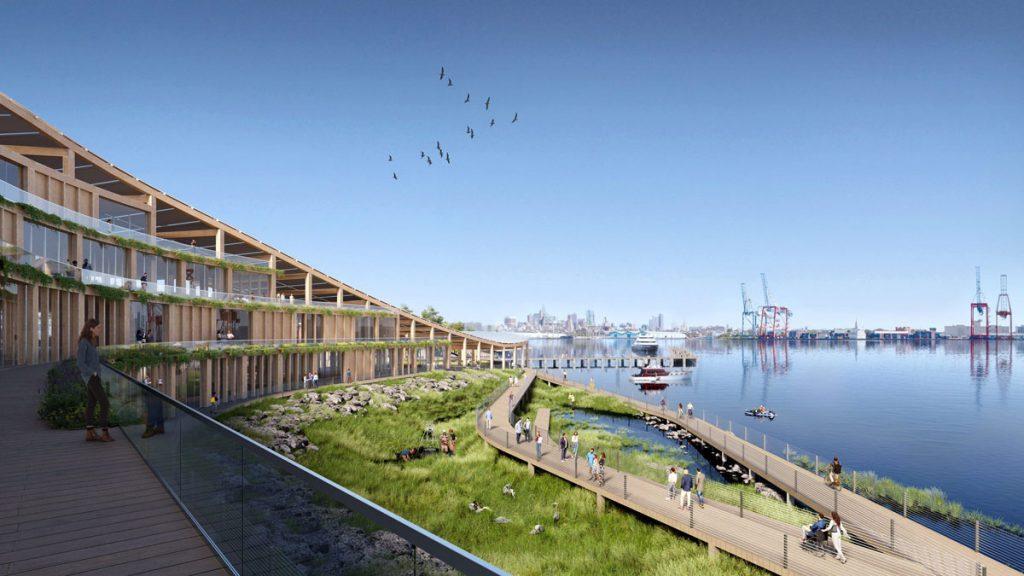
A consortium consisting of IBM, the Georgia Institute of Technology, Pace University, the Pratt Institute and the Boston Consulting Group, as well as Stony Brook University, will also cover the ongoing operating costs. Thus, there will be no additional costs for New York residents.
For a long time, the island was considered an insider tip. That’s about to change. The Exchange is part of New York Mayor Eric Adams’ plan to protect the city of New York from extreme heat by 2030. And so a campus that focuses on climate research and education around the topic is quite fitting.

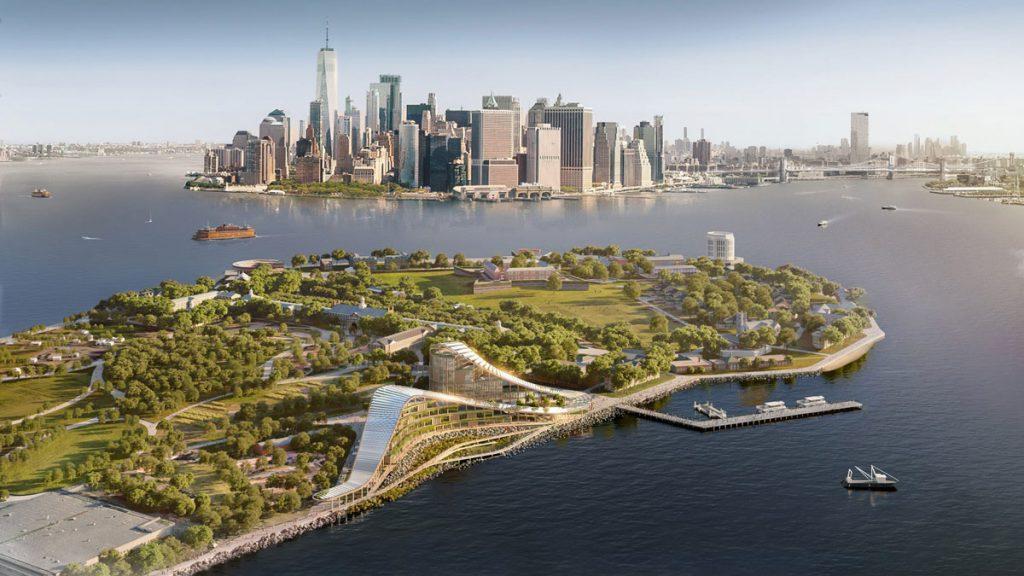
iThere are no comments
Add yours